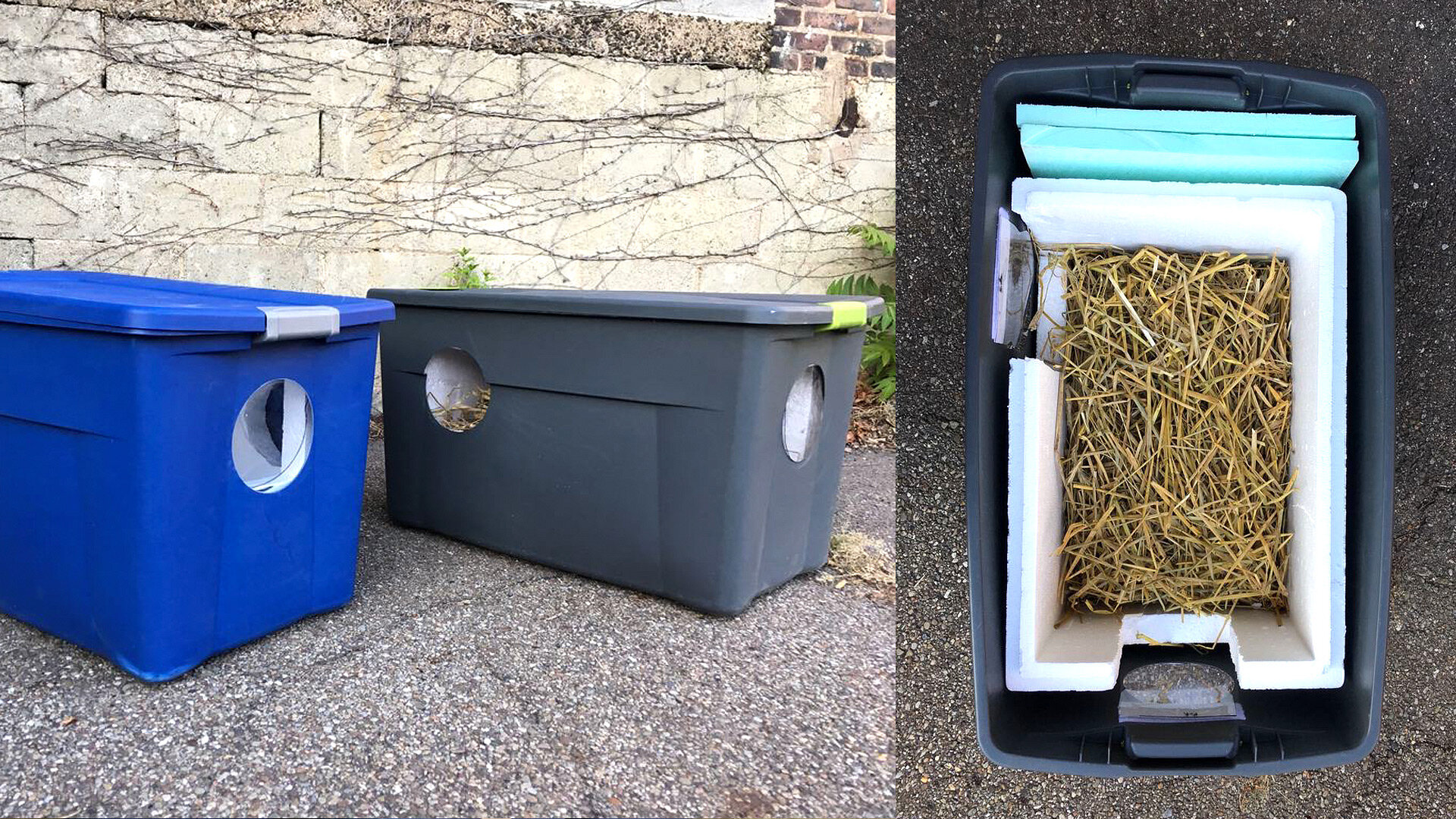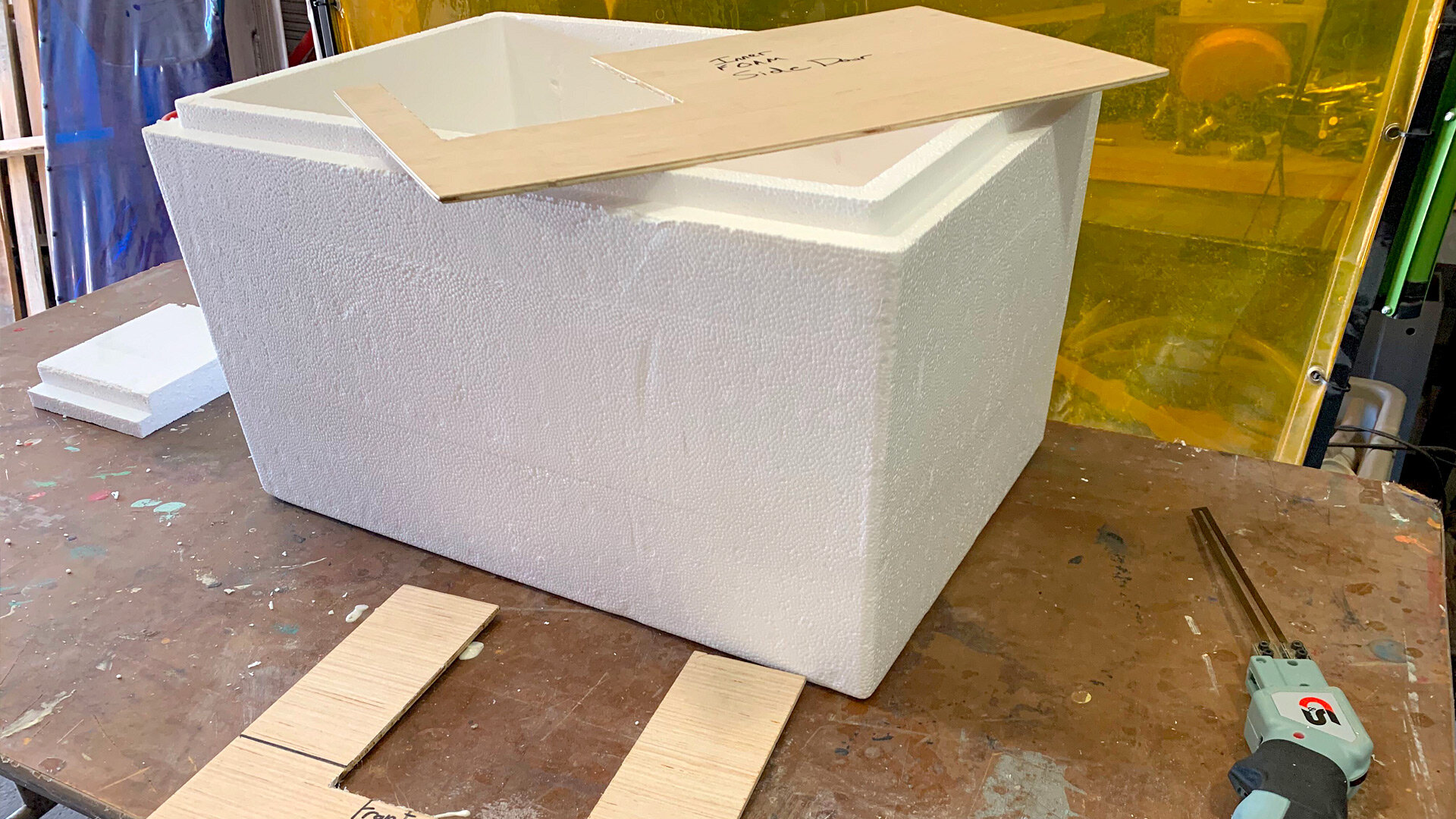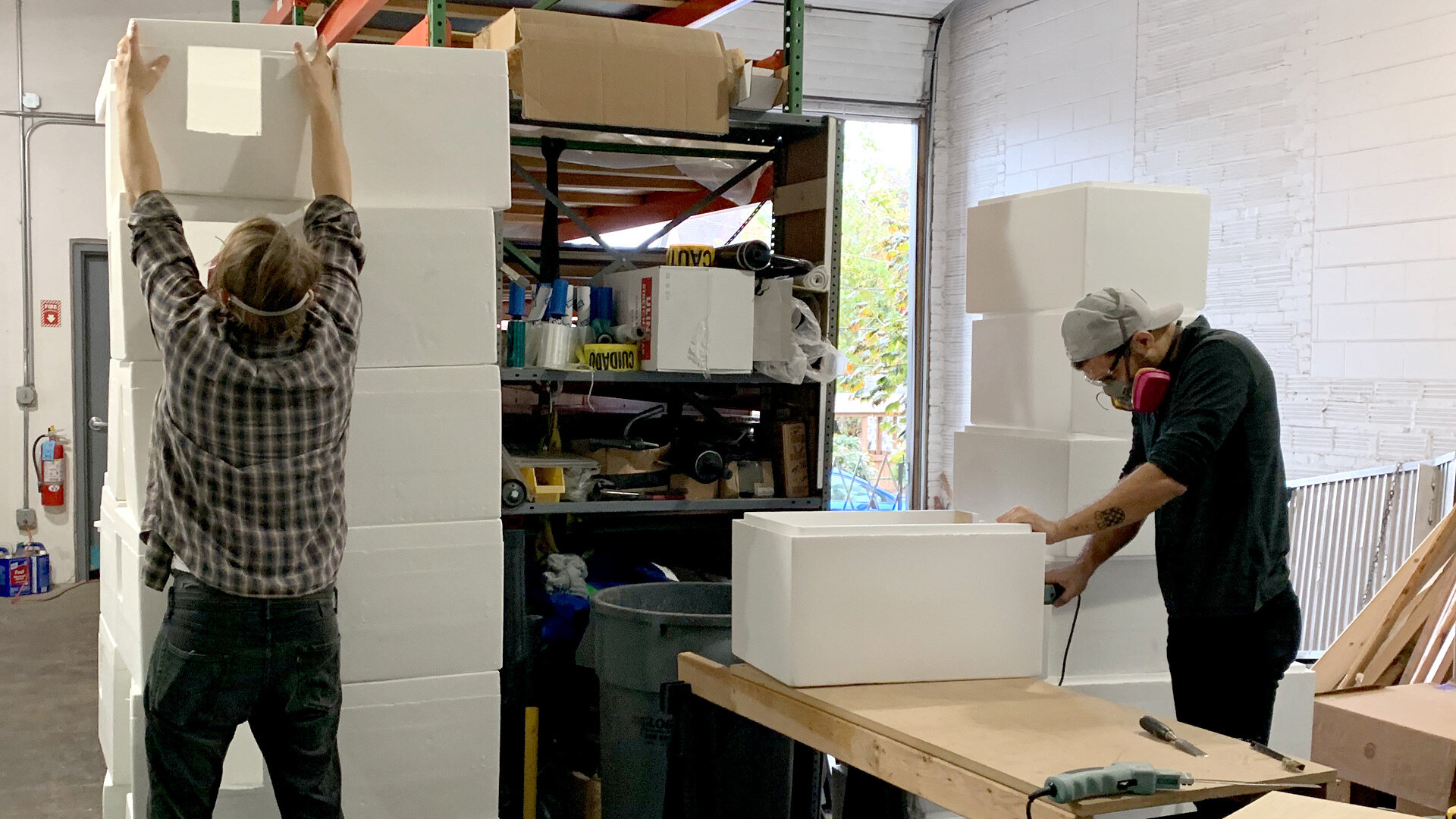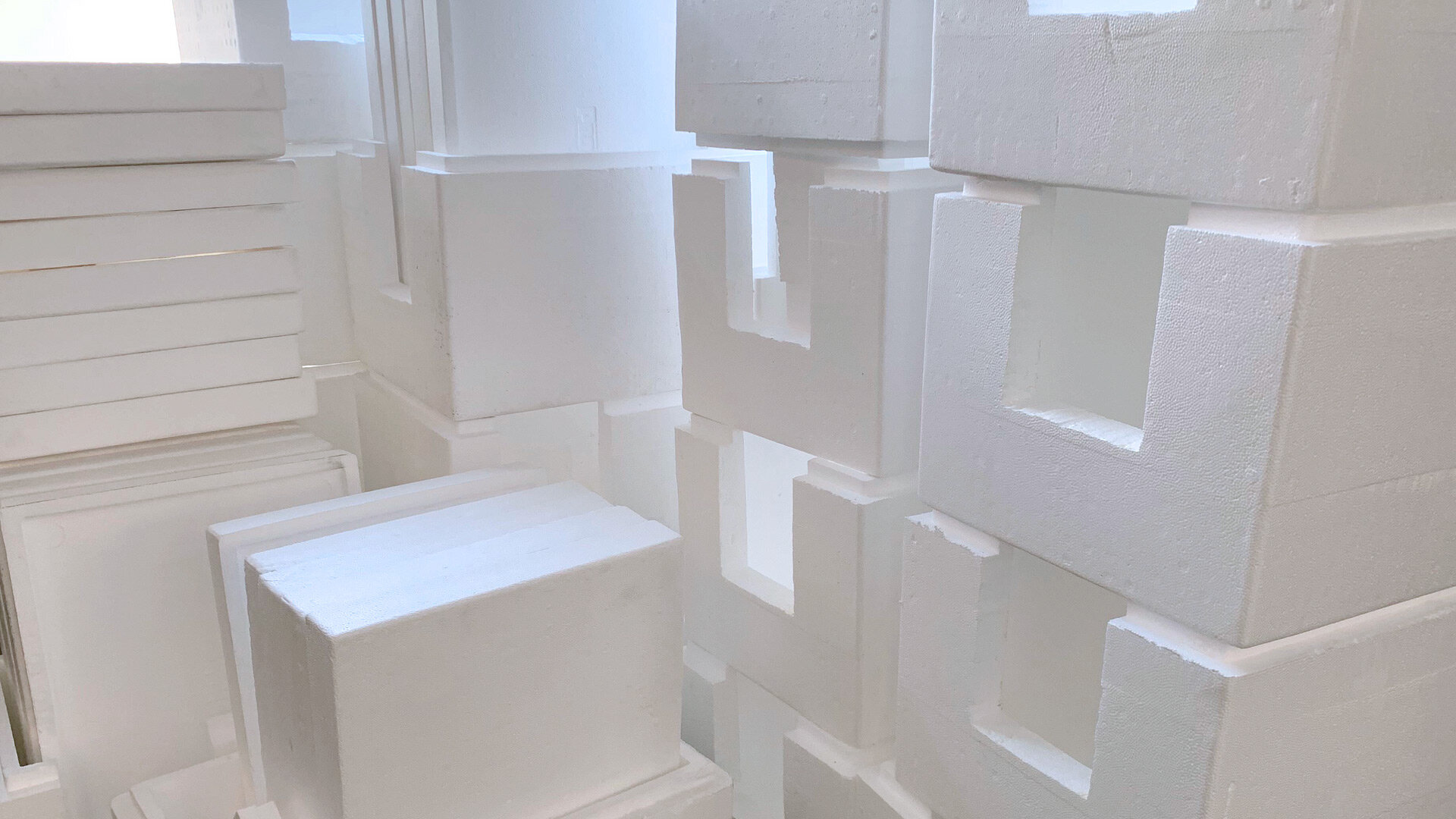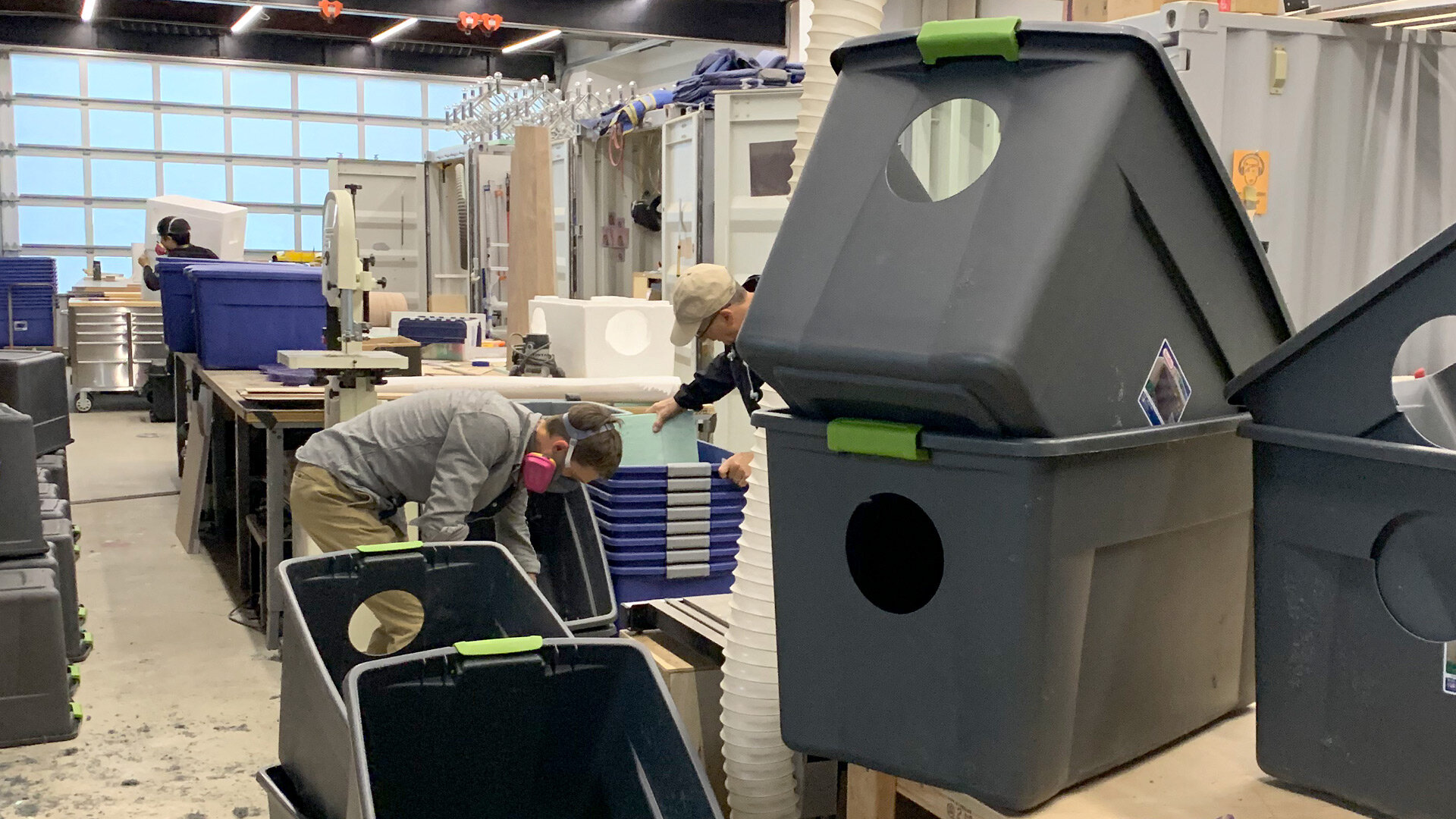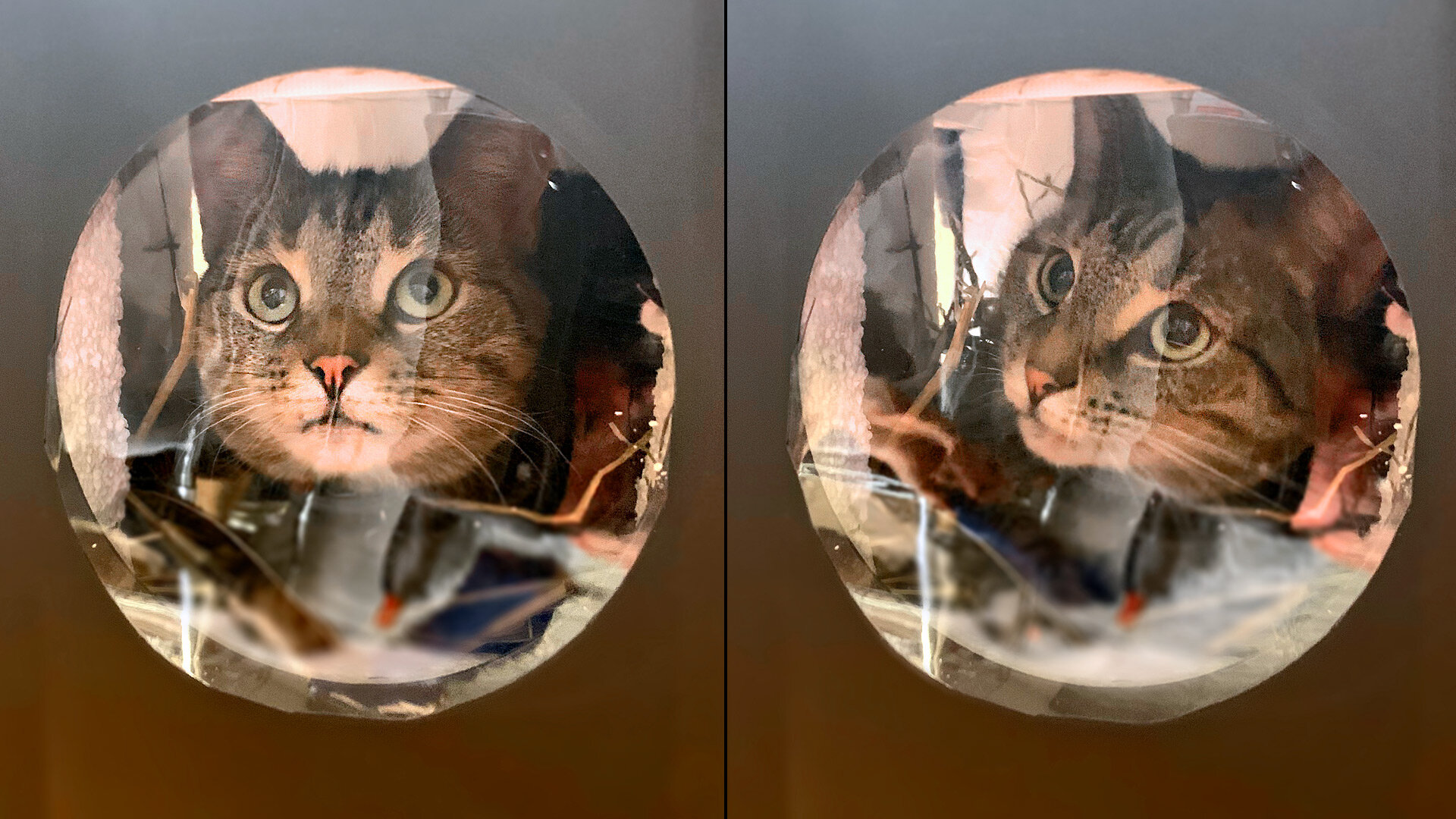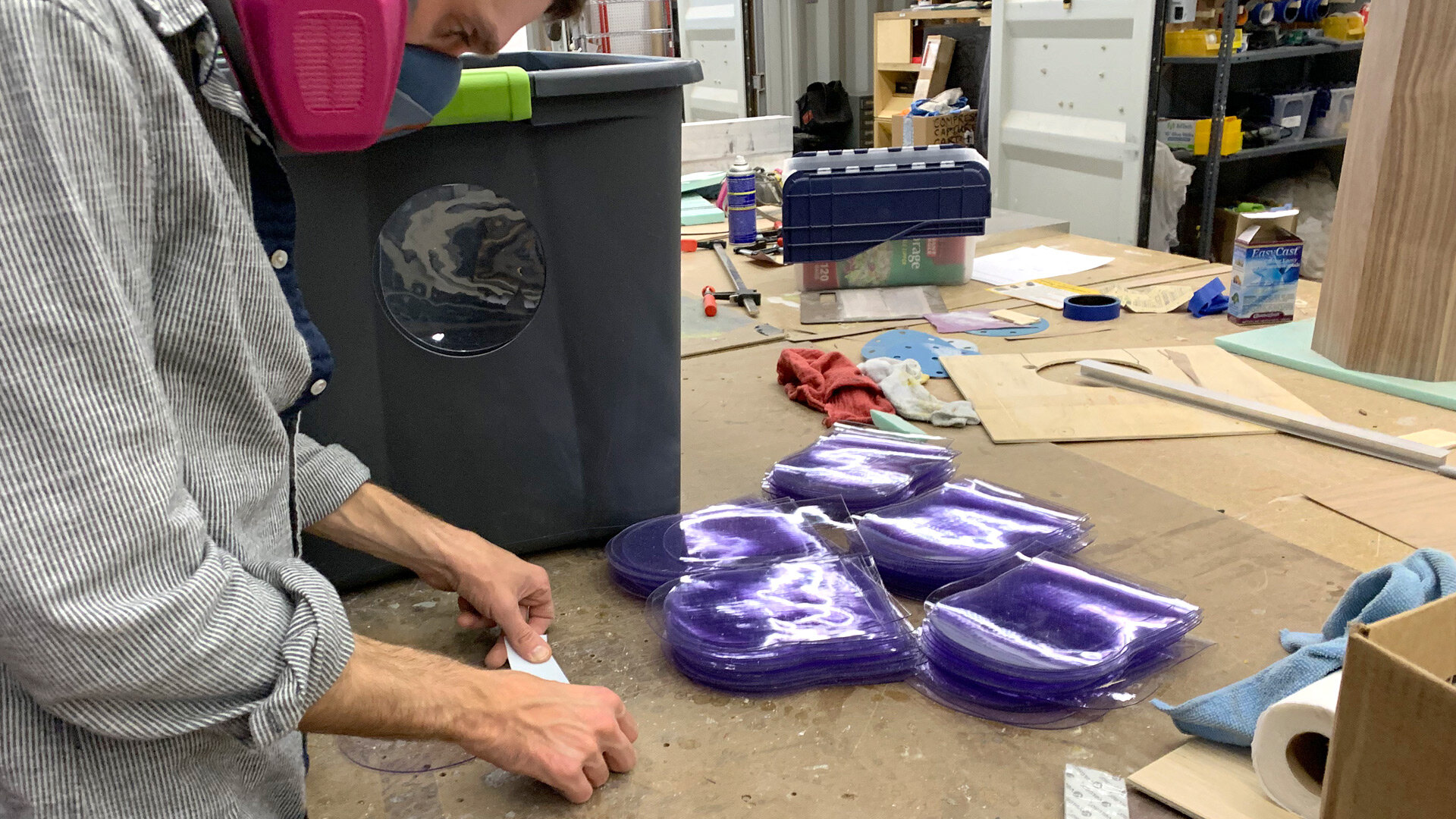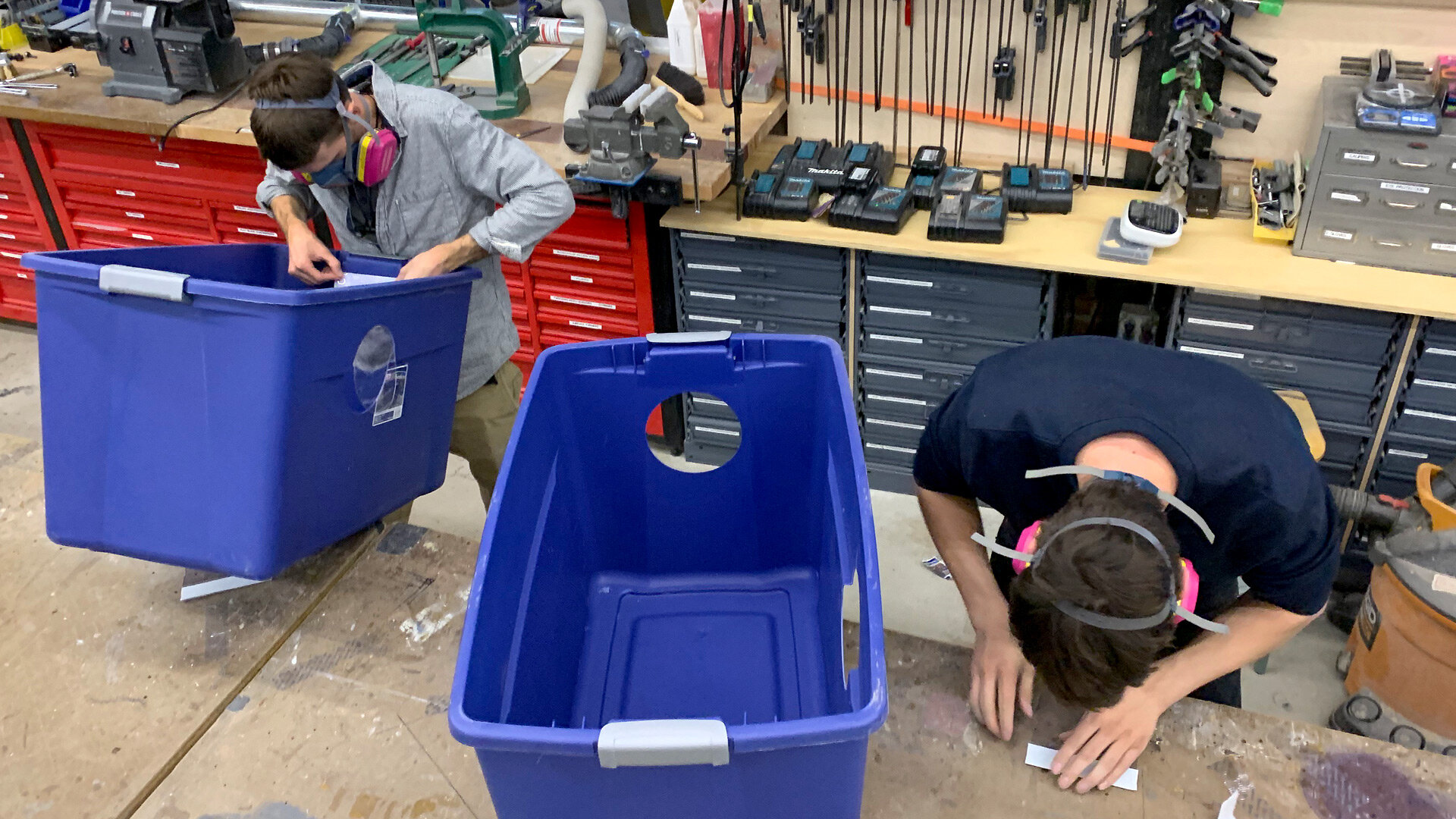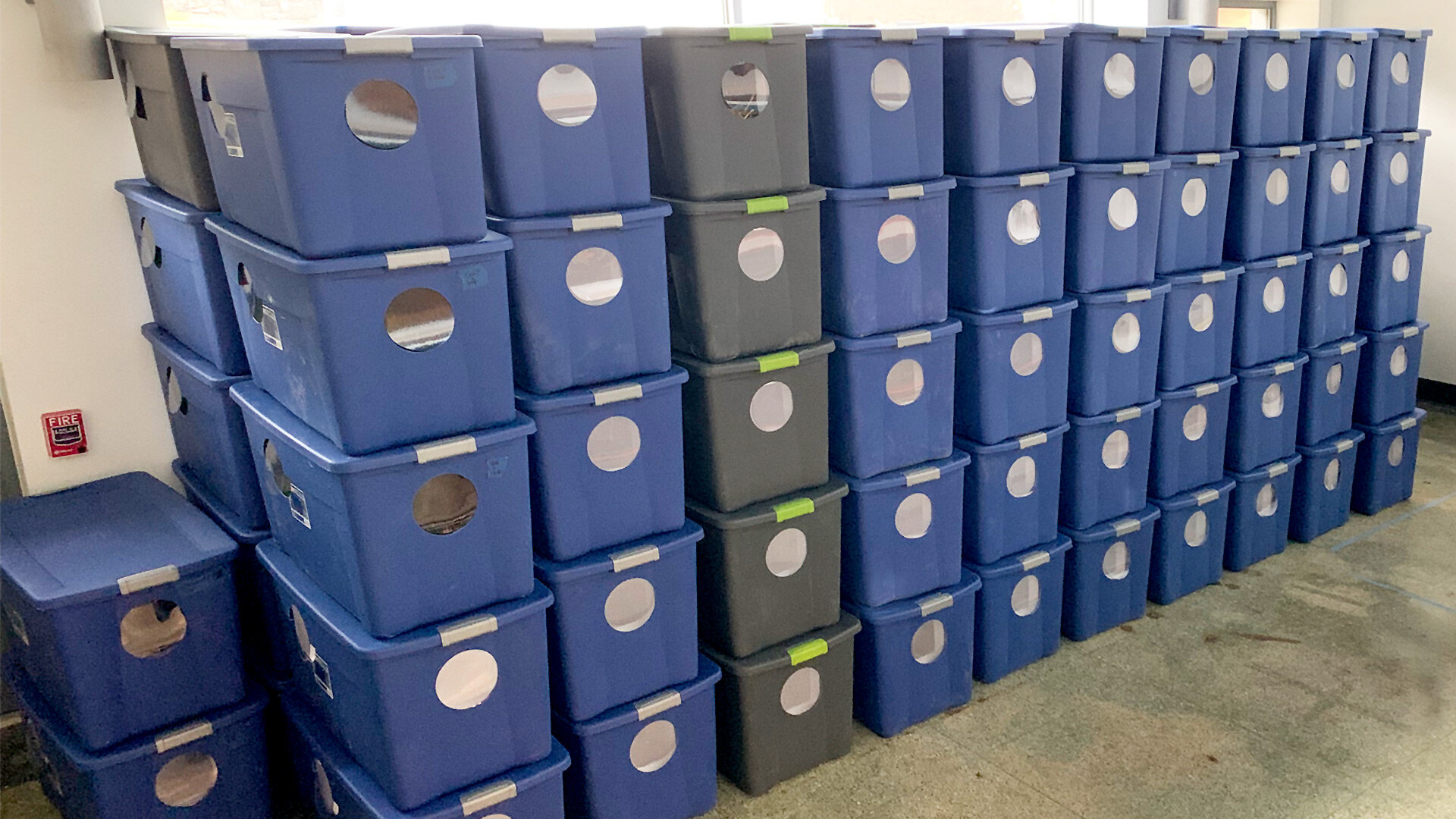MEGA SHELTER PARTY
One area that Trap, Neuter, Return (TNR) volunteers all identified as critically important to maintaining community colonies are high quality, affordable outdoor shelters. Cats are crafty survivors, but severe winters and exposure can kill any cat that does not have a secure, dry place to sleep at night. Resourceful community cat volunteers have figured out a fairly low cost but labor intensive process to make outdoor tote shelters that are weather resistant and help keep the cats safe and dry. While these shelters work really well, we know from first hand experience that the build process is difficult to scale.
After spending a great deal of time shuttling to various locations, collecting material donations and stockpiling them in a borrowed warehouse, the CATSA team ran an experiment to see how many tote shelters we could make in one day. To stack the deck in our favor, we arranged to collaborate with seasoned fabricators who would be working on donated time to help assure the build process happened safely and swiftly.
We prototyped iterations of the tote shelter and all the components to get our build process in order. Once we had settled on the details, we optimized our templates, tools and production steps in anticipation of a Mega Shelter Party.
The materials themselves take up a great deal of space, so a giant order of totes was drop shipped in coordination with a 26’ truck rental to move the donated material stockpiles. We then cut our team of professional fabricators loose in a 7,000 sq. ft. shop to churn out the parts in assembly line fashion. In one work day we completed just over 100 shelters.
For additional info on the design and build please check out our DIY Shelter Assembly Guide.
This giant batch of shelters was fantastic, but they all sold out in a matter of days. The build process went really smoothly, but it was obvious that the logistics of wrangling the components and materials proved to be the most difficult part of the process to navigate. Even with all the generous support, donations and production efficiencies, once the tallies were in, we still had to sell the shelters at a loss to make them affordable.
In retrospect, the entire process was also not the most environmentally friendly one. While we were up-cycling used insulated shipping coolers that had been donated, they are still made of styrofoam. We helped keep them out of the landfill, so that is certainly worth considering. It also took many trips over the course of the year to collect the coolers and supplies from the donors as they became available. The design we worked with re-utilized all of the styrofoam sections that we removed to make the doors as additional insulation inside the totes, but we all felt we should try to design an even better solution.


